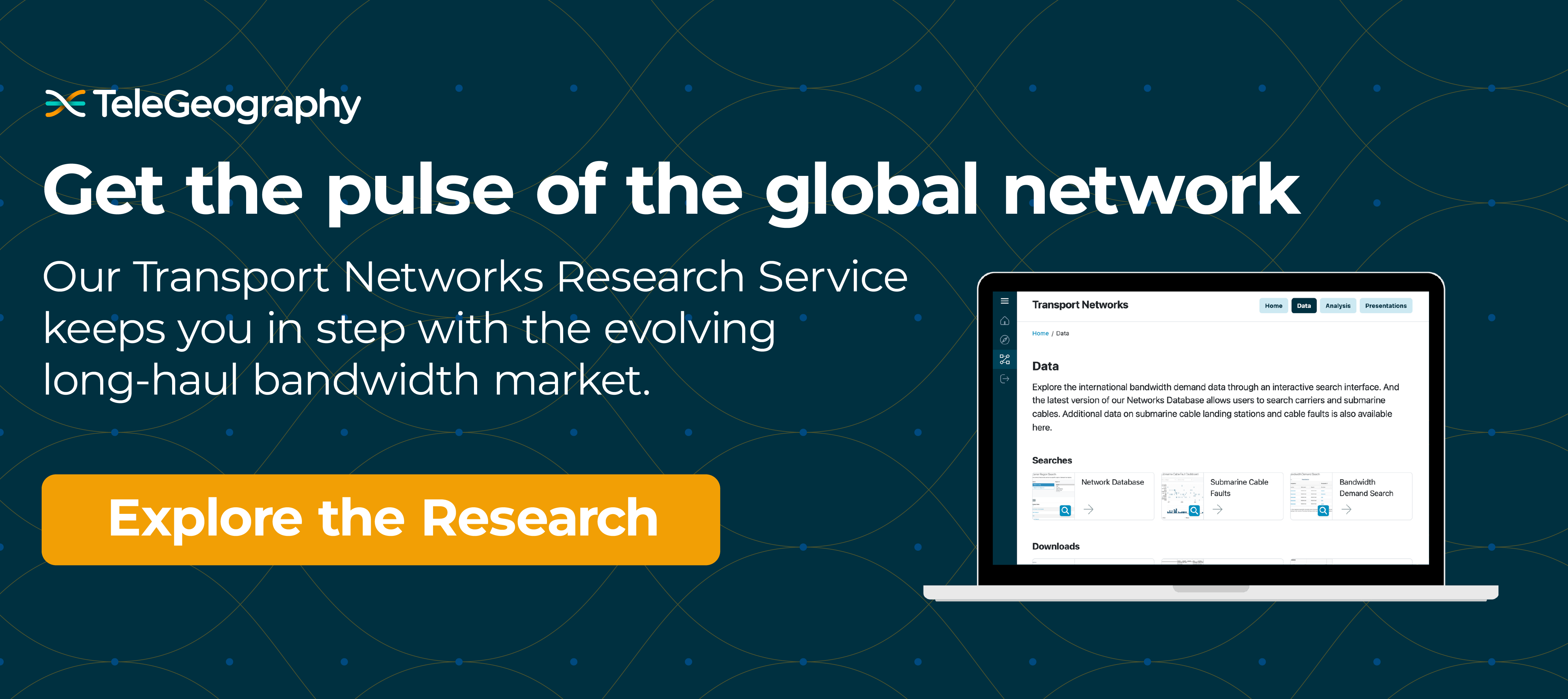Trends in the IP transit market generally follow regional trends of the transport market.
And while some have suggested that price erosion may slow as a result of recent inflation and supply chain constraints (as it has in the wavelength market), we have not seen this trend make its way into the IP transit market.
Across the cities included in the figure below, 10 GigE prices fell 13% compounded annually from Q2 2021 to Q2 2024. Over the same period, 100 GigE port prices fell 15%.
In Q2 2024, the lowest 10 GigE prices on offer in the most competitive markets were at the brink of $0.07 per Mbps per month. The lowest for 100 GigE was $0.05 per Mbps per month.
Weighted Median 10 GigE and 100 GigE IP Transit Prices & Three Year CAGR Decline in Major Global Hub Cities

The sharper decline in 100 GigE reflects increased availability and competition at port size and the advanced maturity of 10 GigE. While 10 GigE remains a relevant increment of IP transit, particularly in more emerging markets, its share of the transaction mix continues to yield to 100 GigE.
In 2024, providers indicated that a majority of their sales mix in key U.S., European, and Asian hubs were now 100 GigE. On average, across the cities noted, the Monthly Recurring Charge (MRC) for a 100 GigE port was 6.8 times the MRC for a 10 GigE port.
Prices in developing markets that activated large scale subsea systems saw the greatest change.
Prices in developing markets that activated large scale subsea systems saw the greatest change.
As 100 Gbps wavelength prices between Europe and South Africa fell 38% post the activation of the Equiano cable, 10 GigE IP transit prices in South Africa decreased 45% over the past year. This clearly supports a correlation between network scale, competition, and price.
In developed markets, carriers are in the process of rolling out 400 GigE services across their network and customer demand has started to materialize.
At the moment, providers report that the service represents a very small portion of their sales mix (think single digits) and is mainly limited to the largest global hubs in Europe and the U.S.
Across key cities in the U.S. and Europe, 400 GigE prices range from $0.07 to $0.08 per Mbps. That’s an average of 2.8 times the price of a 100 GigE port across key cities.
As networks scale to meet increasing demand, price erosion for IP transit remains a certainty in nearly all markets for the foreseeable future.
You’ll find more research like this in our IP Networks Research Service, the most complete source of data and analysis about international internet capacity, traffic, service providers, ASN connectivity, and pricing.
👉 Download the 2024 Executive Summary to peruse a longer sample of our latest findings.



